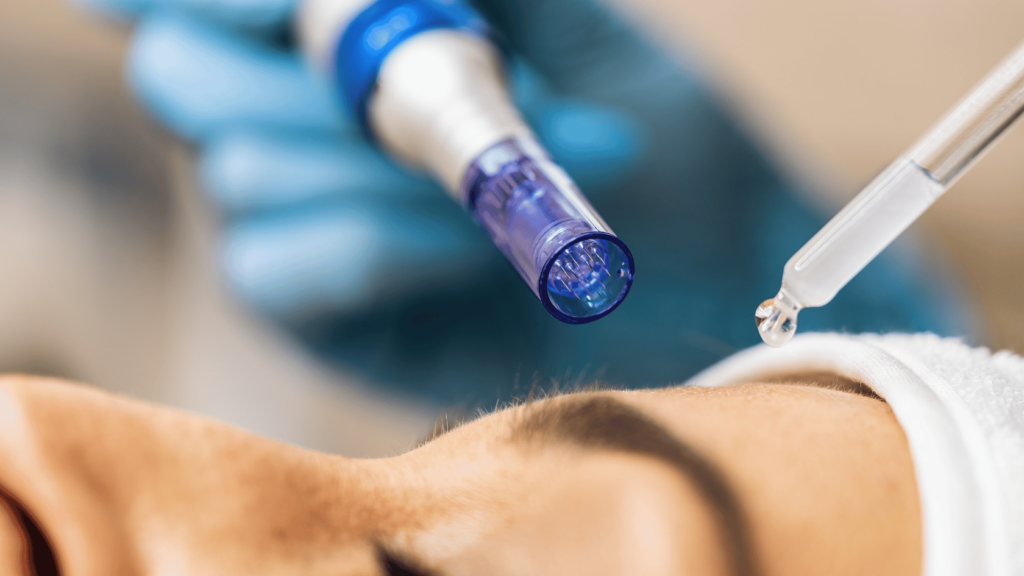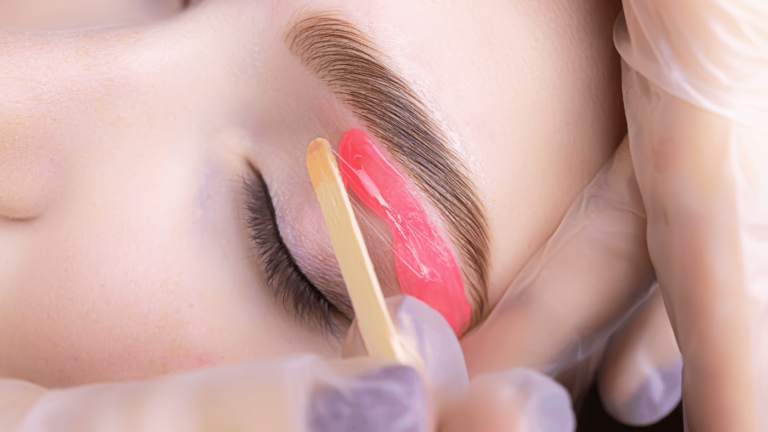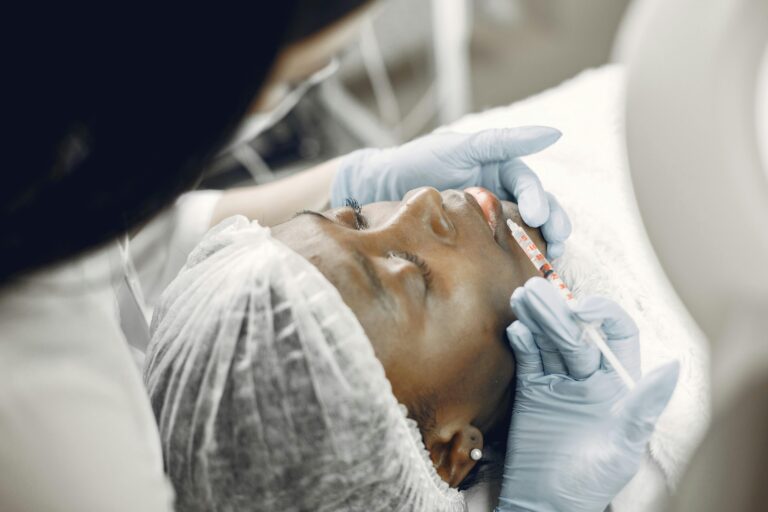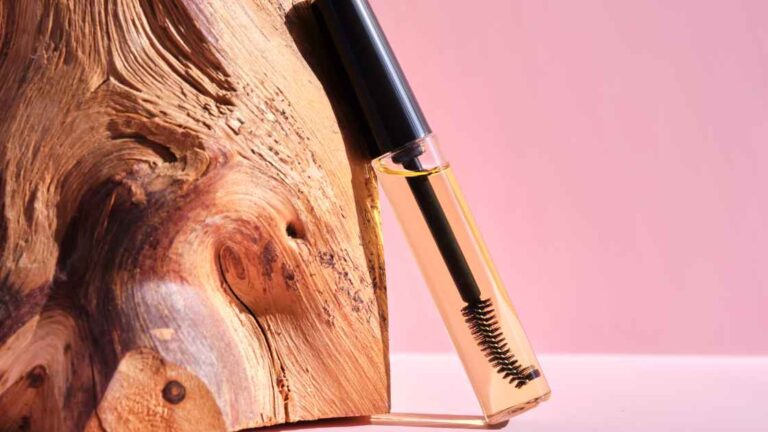Microneedling is popular for making skin look better by creating tiny injuries that boost collagen production. After microneedling, it’s important to know when to use skincare ingredients. Retinol is strong and can help with aging and skin texture, but it needs to be used carefully after this treatment to avoid irritation. We will discuss when it’s safe and helpful to use retinol after microneedling, considering how this procedure affects your skin and its healing process. We’ll share tips on how to balance improving your skin and keeping it healthy after microneedling.
What is Microneedling?
Microneedling is a popular skincare treatment that uses tiny needles to create small injuries on the skin’s surface. This process helps the body heal itself, leading to firmer and smoother skin by increasing collagen and elastin production. It can address various skin issues making it a versatile option for improving skin appearance.
Benefits of Microneedling
Microneedling, also called collagen induction therapy, has many benefits for the skin.
- One main advantage is that it boosts collagen and elastin production, improving skin texture and elasticity.
- It can also reduce fine lines, wrinkles, acne scars, and dark spots.
- Microneedling helps skincare products work better by allowing them to go deeper into the skin. This makes serums and creams more effective.
- It can be used on different body parts for issues like stretch marks or uneven skin tone.
- Additionally, this treatment also boosts circulation, promotes cell turnover, and enhances overall skin health.
- Overall, microneedling is a non-invasive way to achieve youthful-looking skin with minimal downtime or side effects.
Importance of Post-Treatment Care
After microneedling, it’s important to take good care of your skin for best results. Follow the skincare routine your dermatologist or esthetician suggests. Use gentle cleansers, stay out of direct sunlight, and apply soothing creams or serums to help your skin heal.
Drink plenty of water, avoid harsh skincare products, and protect your skin from pollution and harsh weather by using sunscreen and wearing protective clothing. By following these steps, you can improve your skin texture, reduce scarring, and have healthier skin in the long term.
What is retinol and how does it work?
Retinol, a type of vitamin A, is a powerful ingredient in skincare that is known for its great effects on the skin. It can help with various skin issues like wrinkles, uneven skin tone, and acne by speeding up the process of shedding old skin cells and growing new ones. This can make the skin look smoother and younger and can also fade dark spots and acne scars.
Retinol is good at increasing collagen production in the skin, which is a protein that keeps the skin firm and elastic. As we get older, our skin makes less collagen, which can lead to wrinkles and sagging. By making more collagen, retinol can help the skin look plumper and more elastic, reducing the appearance of wrinkles.
Retinol is also effective in treating acne by clearing pores, preventing acne, and reducing inflammation. It can also control oil production, which can help prevent future breakouts. Using retinol regularly can improve the skin’s texture and clarity, making it smoother, clearer, and more glowing.
However, retinol can sometimes irritate the skin, especially at first. This can cause redness, dryness, and flakiness, especially for people with sensitive skin. To avoid irritation, it’s best to start with a lower dose of retinol and slowly increase it as your skin.
Optimal Timing for Retinol Use After Microneedling Treatment
After getting microneedling, the best time to use retinol depends on how sensitive your skin is and how intense the treatment was. It’s generally recommended to wait 24-48 hours before adding retinol to your skincare routine. This gives your skin time to heal from the needle injuries and lowers the chance of irritation or inflammation.
Some experts suggest waiting 3-5 days before using retinol to make sure your skin barrier is fully healed and less likely to have bad reactions. Pay attention to how your skin reacts and start with a lower retinol concentration to avoid redness or peeling. Talking to a skincare expert can give you personalized advice for the best results without harming your skin.

Effects of microneedling on the skin barrier
Microneedling can make the skin barrier weaker temporarily. This can cause more sensitivity, redness, and dryness right after the procedure. But the skin usually fixes itself within a few hours to days, getting back its barrier function. It’s important to follow the aftercare instructions given by skincare experts to help the skin heal and reduce any possible harm to the skin barrier.
Why it’s important to wait before using retinol post-microneedling?
After getting microneedling, the skin is healing and renewing. Using retinol too early can make the skin more sensitive and possibly irritated. Moreover, this powerful ingredient has exfoliating properties and may disrupt the skin’s healing after microneedling. Thus, it’s better to wait until the skin is fully healed lets both treatments work best without causing problems.
Possible side effects of combining retinol with microneedling
When combining both, there are potential side effects to be aware of. One risk is increase in skin sensitivity and irritation, which can make the skin more sensitive to UV rays. This could lead to a higher chance of sunburn or skin damage without proper sun protection. Another side effect to consider is dryness and flakiness of the skin.
Retinol, known for exfoliating, can increase the shedding of dead skin cells when used with collagen induction therapy. While this can lead to smoother and rejuvenated skin in the long run, it may initially cause temporary dryness and peeling. It’s important to closely watch the skin’s response and adjust the treatment frequency to minimize these side effects while still getting the benefits of this powerful combination.
Conclusion
In conclusion, it’s important to wait 24-48 hours after microneedling before using retinol. This helps reduce skin sensitivity and improve the results of both treatments. Consulting a skincare professional or dermatologist is crucial to determine the best approach for your skin. By following guidelines and letting your skin heal properly, you can get the most benefits for better skin health. Remember, being patient and taking good care of your skin are essential for achieving the desired results from these treatments.






